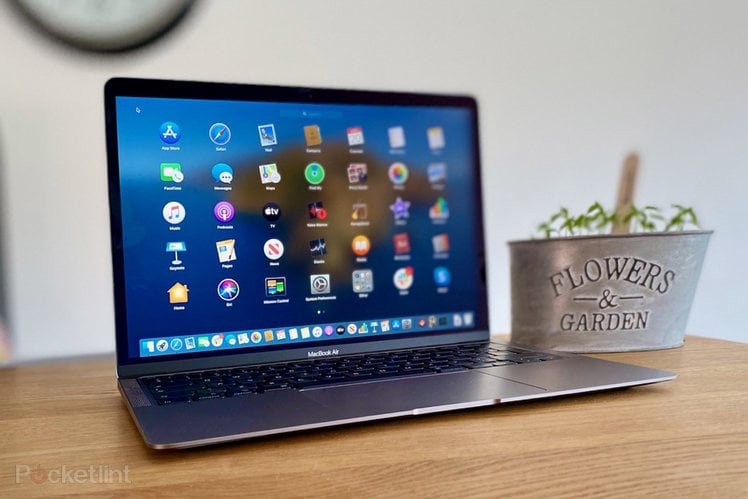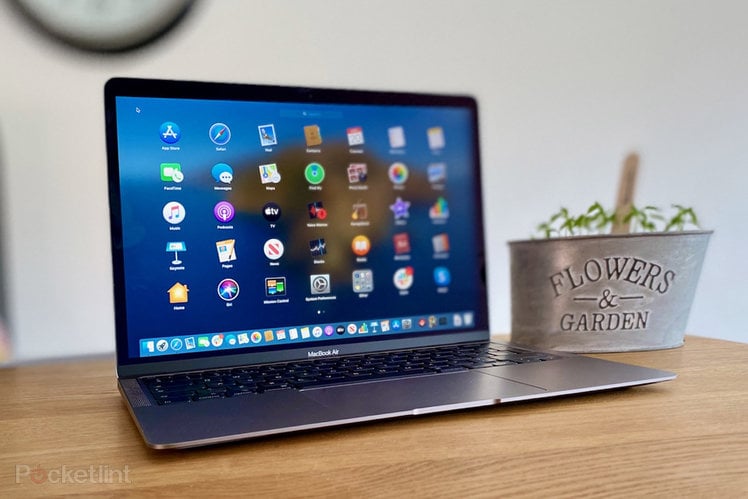
The MacBook Air is one of Apple’s most popular laptops, and following a notable update in 2019 – which saw it get a new design, new Retina display, and a host of other features – there’s a new 2020 model in town.
The 2020 MacBook Air refines the experience ever so slightly, offering enhanced performance, as well as an important move to the new keyboard – the same one which Apple introduced in the MacBook Pro 16-inch model back in 2019. Oh, and there’s a price drop too.
So is this the MacBook to buy?
Design
- Available finishes: Gold (as pictured), Space Grey, Silver
- 13.3-inch ‘Retina display’ (2650 x 1600 resolution)
- True Tone technology for adaptive colour
- 2x USB-C/Thunderbolt 3 ports
- 3.5mm headphone jack
- 15.6mm thickness
- 1.29kgs
The display and the design are identical to the 2019 model. That means the same 13.3-inch Retina display, delivering a resolution of 2560 x 1600 pixels.
Aside from introducing a new keyboard that users have been requesting for an age, you’ll be hard pushed to notice any physical changes. Okay, so it’s 40 grams heavier according to the spec sheet, but you won’t notice that.
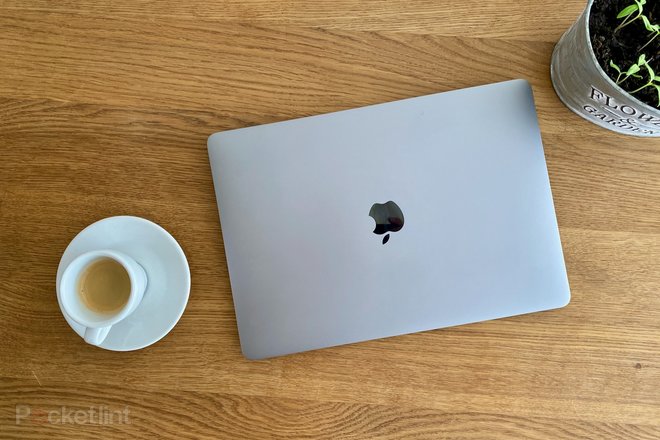
Like the 2019 model the screen is bright, crisp and clean, and while it’s not 4K or as bright as the entry-level MacBook Pro, it will certainly be good enough for most people.
Apple has bumped up the output capabilities, too, meaning the Air will support an external monitor up to 6K (6016 x 3384 resolution) rather than the 5K support of the 2019 model.
The display supports Apple’s True Tone tech, but unlike the MacBook Pro it misses out on the P3 colour matching.
As before the form factor is tight and compact, more akin to Apple’s MacBook Pro range, although the Air does feature the reduced wedge design – it tapers towards the front – that it’s famous for. There’s two USB-C/Thunderbolt 3 slots and a 3.5mm headphones jack – but that’s your only option in terms of ports numbers.
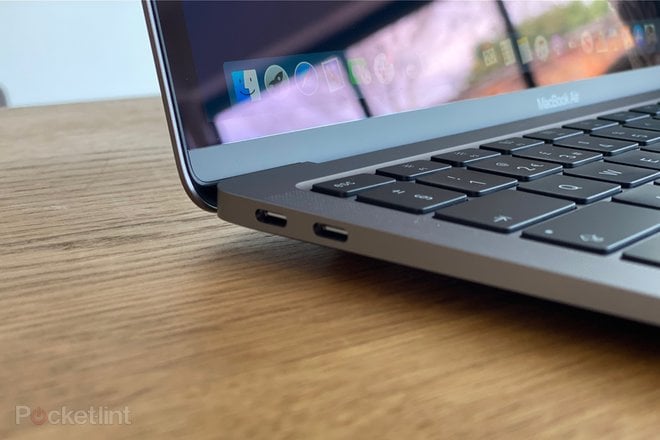
It would have been nice to get a thinner bezel this time around, a la Dell XPS and other makers, but Apple hasn’t taken that approach here, or even with the MacBook Pro models, so it isn’t something we were expecting to see imminently.
Keyboard
- Scissor mechanism keyboard
- Large trackpad with Force Touch (dual level control)
- Touch ID fingerprint login (no Face ID)
This version of the MacBook Air comes with Apple’s new scissor mechanism keyboard, as per the MacBook Pro 16-inch model, which means it’s considerably more comfortable to type on that previous models.
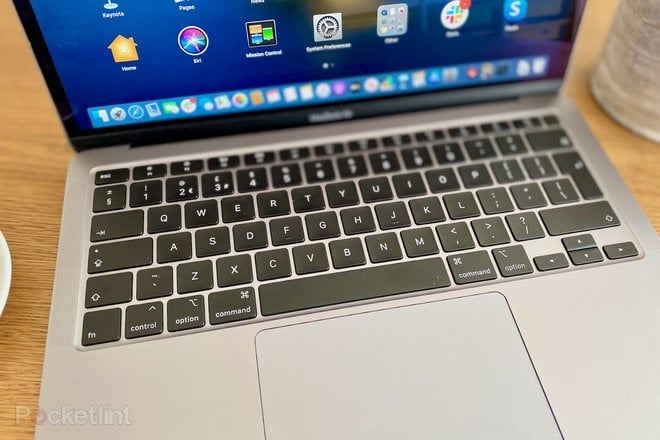
We loved it on the 16-inch MacBook Pro, and it’s a joy to use here too, thanks to around 1mm key travel making everything just that little bit softer compared to the butterfly mechanism on earlier models.
It also makes typing considerably quieter too, which we’ve already found has come in handy when working late in bed as to not disturb our partner – our MacBook Pro with butterfly keys is a definite no-no on that front.
The keyboard has also been tweaked to sort out the arrow keys; it’s back to the left and right keys being small again, rather than double size.
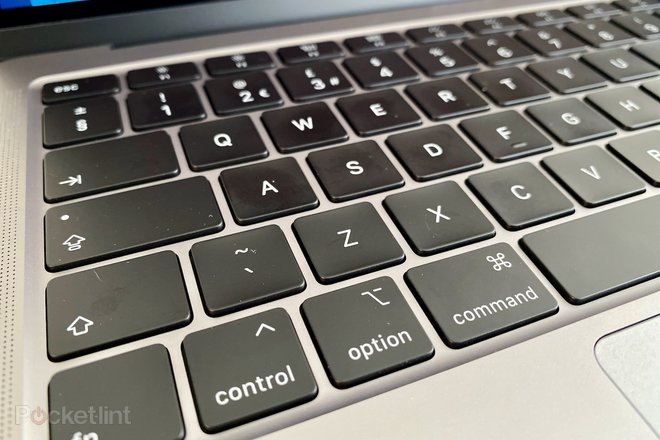
So if fears about upgrading to a new Mac had put you off because of the keyboard complaints, we can safely say that those fears should now have dissipated. Apple’s three-plus-year journey of changing, breaking, then fixing a bit, then a bit more, before eventually ending up at this solution, feels like it’s finally reached the finish line.
It’s considerably better than what we had before – more akin to how it was typing on a MacBook Air in the era way before it went ‘Retina’. Sometimes you have to go back to go forward, eh?
There’s also the easy-to-use Touch ID button that lets you unlock your Mac and access passwords quickly (if you don’t have an Apple Watch connected), or pay via Apple Pay for your online shopping.
Performance and battery
- 10th Gen Intel Core i3 to Core i7 processor options
- 8GB RAM as standard (16GB upgrade available)
- 256GB SSD as standard (512GB/1TB/2TB as upgrades)
A new MacBook Air always means new performance enhancements – and for 2020 the laptop is packing the latest Intel Core processors with dual-core and, for the first time, quad-core processor options. The top-end selection is a quad-core Intel Core i7 processor with Turbo Boost up to 3.8GHz.
Our review unit is the entry-level 1.1GHz dual-core Intel Core i3 processor with Turbo Boost up to 3.2GHz – priced at that critical £999/€999/$999 mark. And it delivers as promised; it’s powerful enough to do most things, just don’t try and push it too hard with heavy-duty video or photo editing, but for most, it should be more than enough.
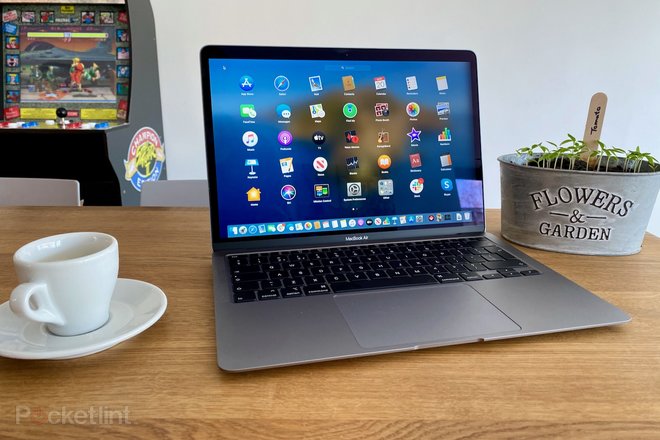
Interestingly, the 2019 base model was a dual-core 8th Gen Intel Core i5 setup. If you want a little more power than the i3 entry-level model, then you’ll have to pay for it: the jump to the step-up option – a 1.1GHz quad-core Intel Core i5 processor with Turbo Boost up to 3.5GHz – hits the £1,299/€1,299/$1,299 mark. However, the 2020 model should see performance up to two times faster than the 2019 model.
Across the range graphics have been upgraded to the Intel Iris Plus processor, meaning the model will support the Apple Pro Display XDR external monitor if you really want to go all-out.
On the memory front there’s 8GB or 16GB options, while the base storage is now a much more manageable 256GB compared to the 128GB on previous outings. If you’re a storage monster you can opt to upgrade to 512GB, 1TB, or even 2TB options – but as your file sizes increase so do the prices.
In our use so far we’ve already noticed that fan whirring up to speed once we’ve asked something demanding of our machine. Games like Hot Lava or Oceanhorn 2 on Apple Arcade, for example. All those Skype and Zoom calls won’t help either.
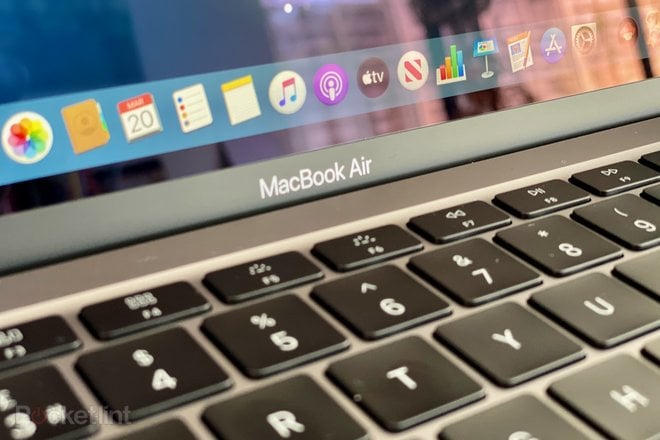
Battery is a promised 11 hours on a single charge Although, as always, it depends what you do with your laptop. The 2019 MacBook Air delivered around 10 hours in real-life tests, and we find this 2020 model is on par with that. Video conferencing and streaming videos online will punish the battery, but that’s nothing new.
